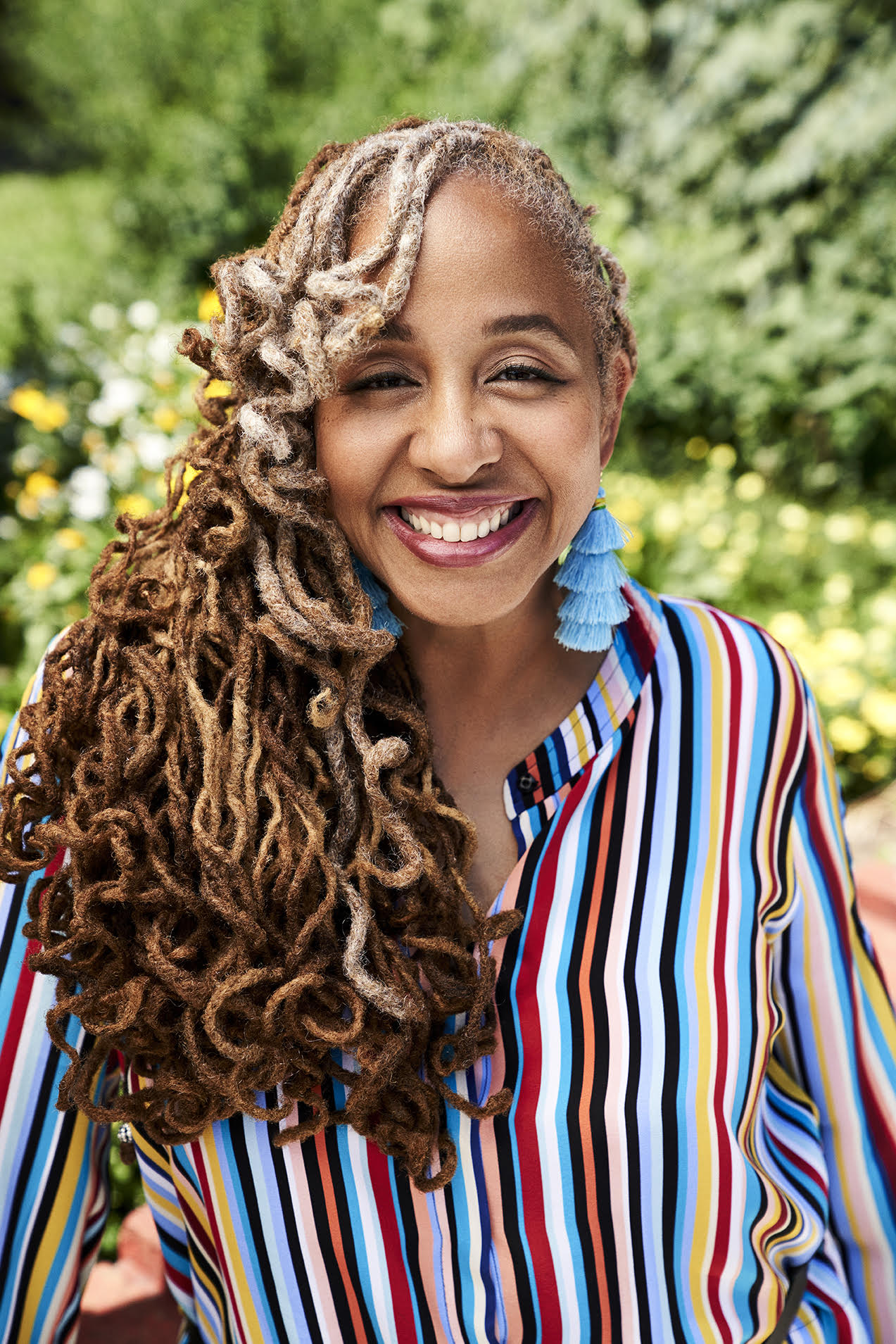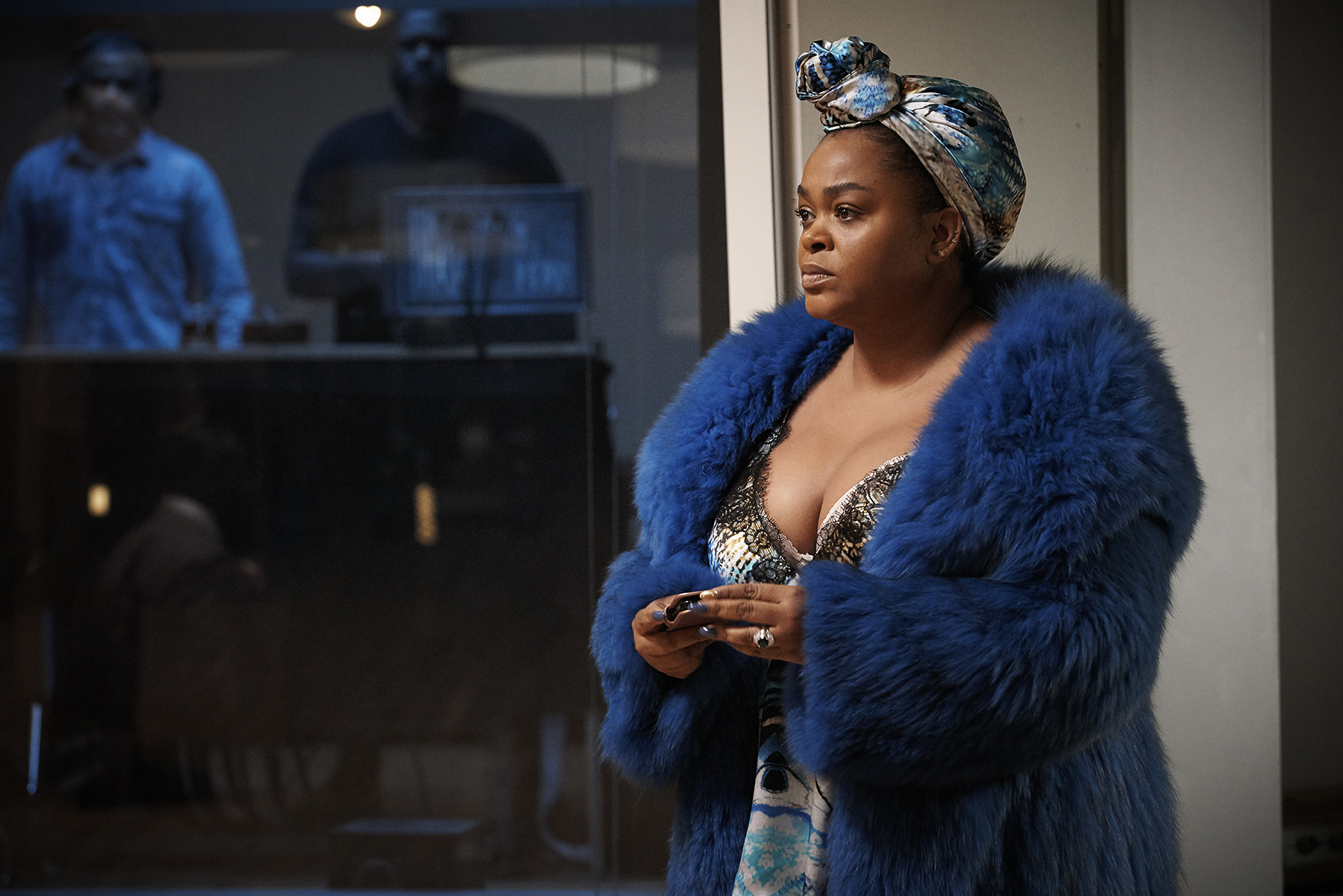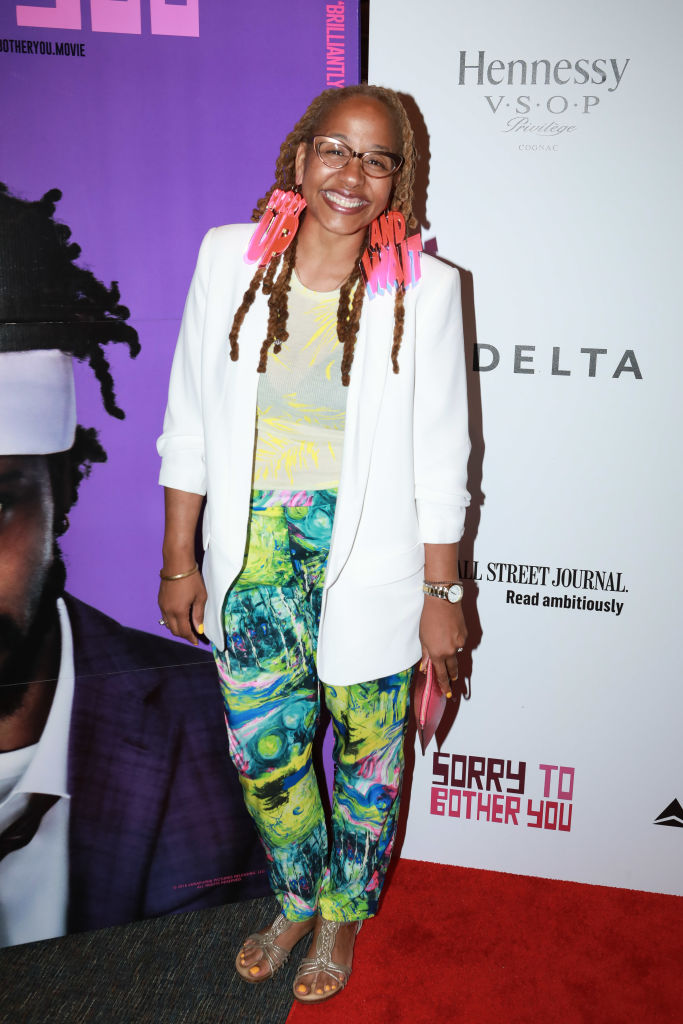
Source: Image courtesy of Deirdra Govan / DeirdraGovan.com
We know that in Hollywood, people of color and Black people specifically in front of the camera is not all that common. And sadly, the same is true behind the scenes. Perhaps even more so. But there are always examples of Black women who’ve managed to forge their own path. For Women’s History Month, we’re honoring one such woman: costume designer Deirdra Govan.
Govan is not new to the world of tv and film styling. In fact, after graduating from Parsons School of Design with degrees in fashion design and design management, she knew she didn’t want to work on 7th Avenue in New York City. Knowing that her designs always had a theatrical flair to them, it wasn’t long before Govan made it to Broadway where she worked on hit shows like “Miss Saigon,” “Les Misérables,” and “Phantom of the Opera.”
From there, she transitioned into television styling for “New York Undercover”, “Law and Order”, and “The L Word Generation Q.” Eventually, she started working on films with her first being the Dreamworks’s premiere release “Peacemaker,” starring George Clooney and Nicole Kidman. More recently, she designed for the film “The Sun Is Also a Star” and “Sorry to Bother You.”
Reflecting on her career, Govan said, ““It’s been a 25 year + journey. This was not something that I fell into. This was something I earned every step of the way. It wasn’t given to me. And I’m very proud of that.”
During our chat with Deirdra, we spoke about Black women in the industry, her creative process, dressing plus size women and her incredible work on BET +’s “First Wives Club.”
We don’t hear a lot of names about costume designers in general and Black women specifically. Do you see a lot of faces that look like yours behind the scenes?
No, I don’t. I think my contemporaries, colleagues that I’ve come up with, yes. But unfortunately, there is still that dynamic in Hollywood where they’ll let a few of us in. It’s slowly changing I feel but—people ask me, ‘How did you get started? Did you have mentors?’ Unfortunately, I did not. I had angels. I had guardians that really were in the right place at the right time for me. And that’s what really propelled me forward. I did not come up under a particular costume designer of color. I know Ruth [Carter] I respect her immensely. She is definitely someone that I consider a mentor in my head that I have a very high regard for because we know each other socially.
But in terms of the way of being shepherded in this business by working for a designer for several years and having that designer groom you, that didn’t happen for me. No one was offering that opportunity. And so, I had to seek it out for myself. And this is where I rely on the fact that my education really set me apart. Because I understand construction, I understand design, I understand techniques and how to take apart clothing. And what clothing and fabric does on the body. I think my theater background is really instrumental in a lot of ways that I think and I see. So, for me, coming up I had my contemporaries who are of color. And they are still in the business today. But we’re very few and far between. And unfortunately, it’s not easy. We are not given the opportunities. You have to seek them out and you also have to be prepared for what comes with that. It’s an unfortunate situation but I do feel it’s changing. But I find that those of us who are out here have been out here for a minute. And we’re still waiting for someone to say, ‘Hey, I’m ready for you.’ Opportunity happens when you are prepared. I think that’s where it is. But my contemporaries and I are doing a really good job of helping each other, being each others’ counselors and advocates, which I think is a rare find.
Style has a profound meaning for Black people.
Yes.
What does style mean to you personally and how do you take that into your professional work?
I feel that style is very personal. I feel the narrative of clothes is what most inspires me. I am an observer of people, places and things. And what I love, even on the streets here in New York, is just observing people’s individualistic style and how they put themselves together or not. I feel we have a style that is so uniquely our own and it is one that is replicated time and time and time again. So as people of color, by virtue, it’s just innate. And that may sound arrogant to some but I feel that it is the truth. I feel that our style and our artistic gifts are translated in many ways and objectified as well. As people of color we’re born with it, it’s a gift.

Source: BET / BET
I want to talk to you specifically about “First Wives Club” because when I saw the show, I was so impressed with Jill Scott’s wardrobe. I think you did a blue fur coat for her. And I remember seeing it and gasping. I know a lot of full-figured women have expressed that there’s not a lot of representation for them. And when they are seen, they’re dressed frumpy and with a lot of florals. But Jill Scott was so fly in that series. Can you speak about your approach to dressing her?
The whole idea of “First Wives Club” when Tracy [Oliver] brought it to me, blew my mind. She is my sister from another mister. We are on yet another creative journey together, doing another show together. And her vision for this series inspired me because she was taking diversity to the nth degree because she also included size inclusivity. So, it wasn’t just Jill Scott, it was Michelle Buteau, who were both plus size. And then we had Ryan Michelle Bathé who was our standard size 6.
Knowing what this meant and what it would mean to the public was always—I knew out the gate that I was going to do it differently. I knew with my background and me also being what is considered plus size at a 12-14 about the frustration that is found when you go into the stores and they don’t have your size. You want to dress stylish and cute. You don’t want to wear a potato sake. You want to wear something that’s funky and fly and you feel fabulous. What I found in the market was that there had been some successes but they are very narrow focused. Because literally what they’ll do is they’ll create lines but if those lines don’t sell well, they’re pulled off the floor or they will be discontinued. And it has been historically a perpetual frustration. I do think size inclusivity has changed in the past few years.
So I had a really strong intention and was very focused in how I wanted to create Jill and Michelle’s characters. They were women of a certain age, they were sexy, they were full-figured, they were desirable. And they had issues just like everyone else. I didn’t want their size to be the focus. I wanted the fact that these women were dressing as women and were stylishly fabulous. So what that meant was doing a deep dive into brands that I felt could service the narrative. And that also meant I put pen to paper and designed a lot of original outfits that Jill and Michelle wore.
So, Jill’s lingerie outfit when she’s in the Adrienne Landau fur coat was scripted. It was scripted that she was to be in a fur coat. And the blue fur coat just happened to be that. And her lingerie is a look that I designed her fur coat. So I went to the garment district, did my fabric swatching, which I do for every look. Any outfit I tend to purchase in store, I usually alter in some way, shape or form. And this was an example of a way to show this woman who is sexy, who has a body and is desirable but is literally being cast aside for a younger, skinnier version of herself. So there was no way I would ever put Jill or Michelle in a potato sack. That would never happen. But it was important for me to understand the physicality of their body, form and what worked for them and what did not. I had a brilliant tailor that I worked with. So designing with her, who was also plus size, it was a match made in heaven. She knew intuitively what I wanted to do. And it just came to life. It was pretty exceptional and a lot of fun.
It was perfect.
Thank you.
Did you get immediate feedback?
You know what Veronica, I have to tell you—and it’s really sad to say is I heard nothing about “First Wives Club.” Yes, everyone talked about the wardrobe and how fabulous it was and that’s great but I think because of the way the show was positioned, I don’t really think a lot of people had the opportunity to pay attention. I think those of us who really look were scrolling through BET + and saw “First Wives Club” as its crowning project. People downloaded BET + of course but it was such a narrow focus, I don’t think people really got exposed to it. I think people are seeing it now. And the show will have a second season. But I didn’t get that much feedback. You, ironically, are the first person who has asked me about the show. I’m very serious. And that is disappointing but it’s the truth.
Will you be coming back for the second season?
I’m not sure. I’m doing another show for Tracy right now. We just finished our first two episodes and she’s currently writing the second season of “First Wives Club.” They’re a lot on the table for me but we’ll see.

Source: Gonzalo Marroquin / Getty
What looks or projects stand out in your career?
I have to say that my work on Sorry to Bother You is some of my best and most creative because we had no money. We had no money. And this is the perfect example of mental dexterity and craftsmanship that comes into play when you are gifted with a director and producer that trusts you and allows your imagination to soar as you service the story. And that for me is what I’m most proud of. I had people who trusted me and actors who trusted me. At this point in my career, the prerequisite is people want to work with people that they like, people that they enjoy. Because otherwise, the 16-18 hour days that we do are for naught if you don’t enjoy the people you work with. At this point, I’m carving a niche for myself where I’m working with people that I have relationships with and that will call me time and time again. I’m always open but you want to make sure it’s the right fit and the right project and not take it because it’s there.
My work that I’m doing right now on Tracy’s show is incredible. It’s going to blow people’s minds. It’s another narrative of women and I think it’s going to be pretty good. It’s about the story of four women in New York.
What is your strategy for using fashion to advance the character’s storyline?
What I always lead with is the story. Does it serve the character? Does it have a narrative? And that’s what drives me. As I’m reading the script, it’s like I’m mentally transported into that world or I put myself in that environment to see how people are participating and moving in the environment the set is in. When I go out, I kind of have some ideas and I try to see what’s open. I try not to censor myself. I also work that way with my team. I’m always conscious of budget but I like to start with an open mind, start fresh. Then the process of editing begins. We’re hunting and gathering. We don’t shop in one place. We’re finding things anywhere and everywhere. Fashion is a tool and if you know how to leverage that tool, you can be quite successful. But it can’t be ‘I’m just going to buy this because it’s pretty.’ That doesn’t work. It has to be ‘I am buying this because it services the storyline.’ There’s a specific line that says backless dress and the rest of it is up to me as a designer. But that’s how you start. I read the trades, see the shows just like anyone else. I like to be informed. I’m a constant sponge. But my biggest inspiration is not on the runways, it’s in the everyday, it’s on the streets. What we’re trying to create as designers, we’re not doing runway shows or print advertising, we’re creating people. And what I see and what I learn is on the street and travel and my environment. I’m notorious of sneaking photos of people. That’s our resource. That’s our information. I just did a show this weekend and the showrunners couldn’t explain what it is they wanted. So we were shooting in Harlem and I sent them a photo I’d taken of someone when I was just standing there in between shots. And I said, ‘Is this what you’re looking for?’ And they said, ‘Yes, exactly.’
So it’s just having an open mind an being able to see, almost being able to download a catalog of information. It’s more than just fashion. It’s being well-read, well-traveled, opening your mind and constantly, never ceasing wanting to explore.
To learn more about Deirdra’s career, you can visit her website DeirdraGovan.com or follow her on Instagram.
Check out Deirdra’s work on the following pages.









